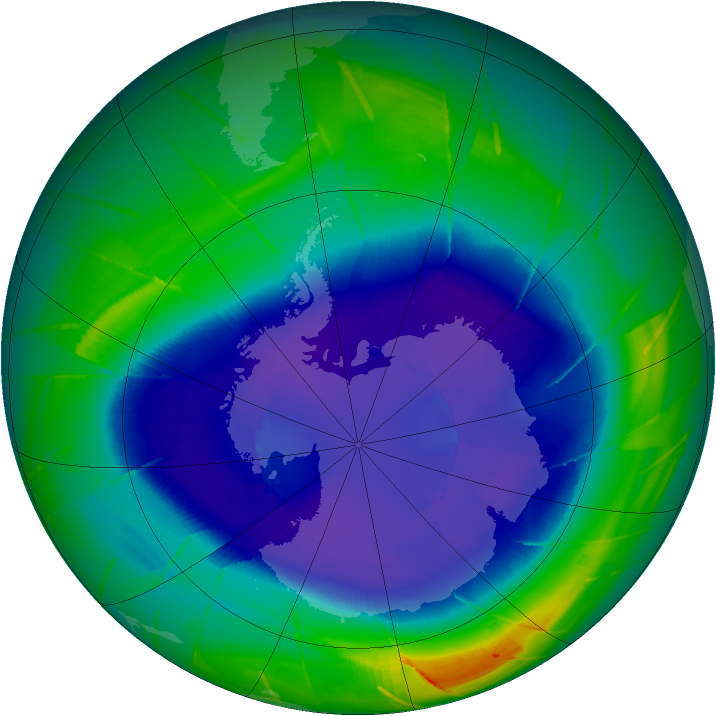Dominic - Now, a paper which really caught my eye came out in the journal of  Climate this week, looking at the environmental impact of chlorofluorocarbons or CFCs. Now, if you were following the news about 25 years ago, you may remember hearing quite a lot about the damaging effect that CFCs have on a layer of the atmosphere called the ozone layer, which is a layer of the atmosphere in the stratosphere which is opaque to the sun's ultraviolet radiation. It means that we on the surface of the earth are exposed to much less of this damaging radiation. So, it makes it possible to go sunbathing without getting sunburnt. Potentially in the past, might actually have made life possible by making sure that complex chemistry needed for life was able to occur without being broken apart by those ultraviolet rays.
Climate this week, looking at the environmental impact of chlorofluorocarbons or CFCs. Now, if you were following the news about 25 years ago, you may remember hearing quite a lot about the damaging effect that CFCs have on a layer of the atmosphere called the ozone layer, which is a layer of the atmosphere in the stratosphere which is opaque to the sun's ultraviolet radiation. It means that we on the surface of the earth are exposed to much less of this damaging radiation. So, it makes it possible to go sunbathing without getting sunburnt. Potentially in the past, might actually have made life possible by making sure that complex chemistry needed for life was able to occur without being broken apart by those ultraviolet rays.
Hannah - And I remember when I was a child that the refrigerators suddenly, they weren't allowed to emit these CFCs that were damaging the ozone layer. There was a big call to make sure that refrigerators complied with the new CFC legislation.
Dominic - That's right. What happened in 1980s was that people realised that CFCs were used as a refrigerant in fridges in people's homes. In 1987, the Montreal Treaty banned the use of those because they had this damaging environmental impact. That was ratified by 200 countries, although it has taken a very long time for the CFCs that had already been emitted in the atmosphere to breakdown.
Now this is often held up as being a great triumph of international legislation in solving environmental problems. But what this paper in the journal Climate is saying this week is that CFCs are also really very strong greenhouse gases. Now, we hear about CO2, carbon dioxide and the effect that that has in causing global warming. But CFCs are actually 10,000 times more powerful as a greenhouse gas than CO2. And so, what this paper is saying is that because we had this spike of CFCs in the atmosphere in the 1980s, that was causing a strong greenhouse effect historically, and over the past 20 years or so, that's tailed off.
So in fact, the global warming that may have been caused by carbon dioxide in the last 20 years, we may not have seen the effect of that in full because it's been offset by this diminishment in the number of CFCs in the atmosphere. So, the argument is really that we mustn't just look at carbon dioxide,we need to look at the full suite of molecules that can cause global warming to really understand the effect that these gases can have.
Hannah - So, there's no cause to celebrate yet about decreasing CO2 levels because actually, we're measuring CFC effects on global warming.
Dominic - That's right. I mean, in the 1980s, we has this wonderful success with the Montreal Treaty that really does seem to have solve the problem with CFCs, we haven't had a similar treaty with carbon dioxide, the Kyoto protocol was not ratified in the end. The data is extremely complicated to analyse because there's all of these different molecules, all causing the greenhouse effect and it's not just carbon dioxide.










Comments
Add a comment